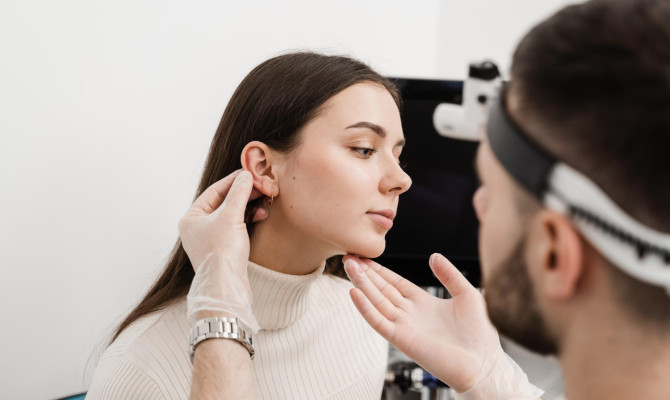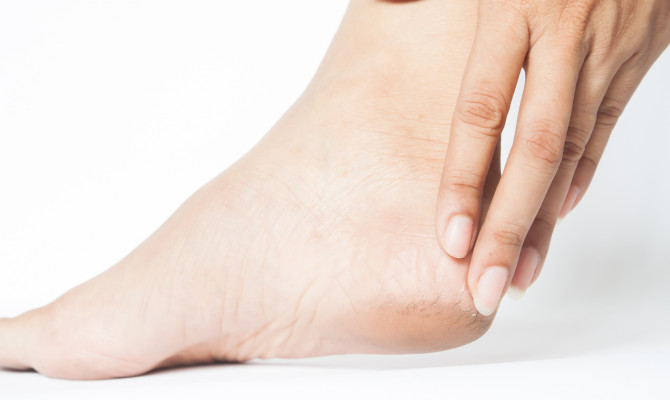Fungal Skin Infection : Understanding and Management

- Fungal Skin Infection
- 16 Aug 2023
Overview
What is fungal skin infection ?
Infestation of any part of the skin by fungus is called a fungal skin infection.
Fungi are a sort of germ; they are ubiquitous, but they seldom cause illness. In certain cases, they might cause skin, hair, and nail infections that require topical creams or oral medication to remedy.
In rare cases, fungi can cause life-threatening illnesses, especially in the weak and elderly. You are more likely to have a fungal infection if you are using chemotherapy or certain anti-inflammatory drugs, both of which can impair your immune system.

Types
What are the different types of fungal skin infection ?
Tinea pedis, or athlete’s foot
- An irritating skin disease caused by the overgrowth of fungus in the space between the toes.1Types | Researched based study from Clevelandclinic.org
- Several different types of over-the-counter lotions are available for treating it.
- In most cases, visiting a pharmacist is preferable to seeing a doctor, while those with diabetes may require additional medical attention.
Ringworm infection
- At some time in their lives, the vast majority of people will contract ringworm.
- It’s a dry, somewhat red circle of itchy skin, typically on a leg or arm.1Types | Researched based study from Clevelandclinic.org
- Applying an antifungal lotion typically resolves the issue.
- The typical look of a ringworm is that of a scaly circle that clears outward from its center.
Infestation with ringworm
- This condition manifests itself most frequently on your exposed arms, legs, and trunk.
- It manifests as a circular rash that is red and scaly.
- Contact with an infected person or with infected articles of clothing or bedding is required for transmission of ringworm.1Types | Researched based study from Clevelandclinic.org
- The ringworm fungus is not only carried by humans but also by animals such as cats and dogs.
Ringworm on the groin
An itchy, red rash appears in the groin and on the upper legs when ringworm is present. It’s more frequent among men and is sometimes referred to as “jock itch.”1Types | Researched based study from Clevelandclinic.org You have a higher chance of getting it if:
- If your skin here gets moist and warm
- You’re morbidly obese
- You wear skin tight garments.
Ringworm of the groin is particularly common in those with a history of psoriasis or athlete’s foot. Half of those who are afflicted also suffer from athlete’s foot. Direct touch is the most common method of transmission, however, it can also be spread via sharing towels or clothing.
Scalp rash due to ringworm
This is more common in kids but may infect anybody.
- Your scalp may become itchy and scaly. Some people get red, pus-filled bumps on the patches. A pus-filled sore on the scalp, known as a kerion, may also appear.1Types | Researched based study from Clevelandclinic.org
- Sharing a hairbrush or article of clothing with someone who has ringworm on the scalp can lead to infection.
Infections due to the yeast Candida
- Yeast, or Candida, is a kind of fungus. It might be a harmless parasite or bacteria that reside in your gut or vagina. However, in favorable environments, candida can thrive and cause illness.1Types | Researched based study from Clevelandclinic.org
- Yeast infections are most common in the mouth, the genitalia (vagina), and other skin creases.
- ‘Thrush’ is a popular word for candida infections. Thrush causes pain and itching wherever it appears. Small pus-filled patches may form on the skin, which is often red and wet.
- Itchiness with a white discharge is a common symptom of vaginal thrush in women.
- Babies and the elderly (especially those with fake teeth or a medical condition that decreases the resistance to infection) are at higher risk of developing thrush in the mouth.
- It manifests as white spots that, when rubbed off, reveal a crimson mark.
Nail fungus infections
Toenail fungus is quite prevalent and can spread to other nails. Infected nails from fungus show these signs:1Types | Researched based study from Clevelandclinic.org
- Fingernails becoming white.
- The nails are flaking and become brittle.
- Curved, rather than straight, nails are developing.
Pityrosporum versicolor
- Malassezia, a kind of yeast that naturally occurs on the skin and does no harm, causes this infection.1Types | Researched based study from Clevelandclinic.org
- Young people and teens are particularly vulnerable.
- Patches of scaly, discolored skin that may be somewhat irritating are a symptom of pityriasis versicolor.
- The back, chest, and upper arms are popular locations, although they can show up anywhere.
- The skin around the patch may be darker or lighter than the rest of your body.
- After spending time in the sun, you may have noticed that the afflicted region didn’t get as tan as the rest of your skin.
Symptoms
Common symptoms of fungal skin infection
- The manifestations of infection with fungi or yeast on the skin are condition-specific. The fungus can cause localized or systemic symptoms.1Symptoms | Researched based study from Clevelandclinic.org
- Rashes are one of several symptoms of fungal skin diseases.
- Fungal skin infections typically display greater inflammation around the border than in the center of the patch.
- Fungal nail infection may cause your nails to become painful or numb with time, making it difficult to move or exercise.
- Damaged hair is the main symptom of fungal infection on the scalp.
Causes
What causes fungal skin infection ?
Infections of the skin, hair, and nails can be caused by a wide variety of fungi and yeasts.1Causes | Researched based study from Clevelandclinic.org
- Candida (thrush) is an example of a fungal skin infection that often results from an excess of your body’s naturally occurring, harmless fungus.
- Contact with a fungal infection carrier, such as a sick person or animal, can result in a fungal infection in the host. This is why athletes who engage in close-contact sports like wrestling have a higher risk of developing fungal skin infections.
- Sharing personal items like clothing, towels, hairbrushes, and bedding can potentially spread the fungus. It’s possible to get foot fungus from walking barefoot in public baths and swimming pools.1Causes | Researched based study from Clevelandclinic.org
- Since fungal infections are more common in warm, damp environments, consider the following:
- Don’t wear shoes that won’t allow your feet to ‘breathe’ if you’ll be in a humid setting
- Have excess skin folds that cause friction due to being overweight.
Vulnerability
Who is at risk?
Individuals that have a compromised immune system
- Opportunistic infections occur when a person’s immune system is compromised and allows the infection to take hold.3Vulnerability | Researched based study from Cdc.gov
- Opportunistic infections are a common cause of fungal infections.
- Bacteria, viruses, and fungi are all possible culprits in these conditions.
Those who are afflicted with HIV/AIDS
- Fungal infections such as cryptococcosis, histoplasmosis, coccidioidomycosis, and pneumocystis pneumonia (PCP) are more likely to occur in people with HIV due to the virus’s ability to suppress the immune system.3Vulnerability | Researched based study from Cdc.gov
Organ transplant recipients
- Although anti-rejection medicine facilitates organ acceptance by dampening the immune response, it also increases the recipient’s vulnerability to fungal infections as a result, it might be difficult to diagnose a fungal infection.3Vulnerability | Researched based study from Cdc.gov
- Seeing a doctor often can aid in the early detection of health problems and perhaps help you avoid being sick in the first place.
- Preventative treatment against fungal infections may be prescribed by your doctor.
Patients with Cancer
- Radiation and chemotherapy both alter the body as they kill cancer cells.
- These medications alter your immune system significantly, making you more susceptible to illness, including fungal infections.
- Leukemia, lymphoma, and myeloma patients, as well as those who have undergone a stem cell transplant, may be at a higher risk of developing fungal infections than the general population.3Vulnerability | Researched based study from Cdc.gov
- Keep an eye on your white blood cell count if you’re concerned about your risk of infection.
- Preventative treatment against fungal infections may be prescribed by your doctor.
Individuals that do not have a compromised immune system
- Skin, nail, and vaginal yeast infections are frequent types of non-lethal fungal infections.
- People who reside or travel to locations where respiratory illnesses like Valley fever or histoplasmosis are common should take precautions.3Vulnerability | Researched based study from Cdc.gov
Management
Management of fungal skin infection
Topical antifungal medications such as creams, liquids, and sprays.
- These are prescribed for patients with nail, hair, or skin fungal infections.2Management | Researched based study from Nlm.nih.gov
- Common examples are terbinafine, econazole, amorolfine, clotrimazole, miconazole, ketoconazole, tioconazole, and econazole.
- When two functions must be performed, an antifungal cream may be mixed with another type of cream.
- Some rashes are treated with a combination of antifungal cream and moderate steroid cream, such as hydrocortisone.
- Both the antifungal and mild steroid creams eliminate the infection and its associated inflammation.
Antifungal shampoo
- Fungal infections of the scalp and other skin diseases can be helped by using a shampoo containing ketoconazole.2Management | Researched based study from Nlm.nih.gov
Topical antifungal pessaries
- Pessaries are special tablets that may be inserted into the genitalia. Vaginal thrush can be treated with pessaries containing certain antifungal medications such as clotrimazole, miconazole, fenticonazole, and econazole.
Oral antifungal medications
- Oral gel formulations of both miconazole and nystatin are commercially marketed. You put them in your mouth.
- They are prescribed for patients suffering from oral thrush (candida infection).
- In the form of tablets, antifungal medications such as terbinafine, itraconazole, fluconazole, posaconazole, and voriconazole can be taken orally and absorbed by the body.2Management | Researched based study from Nlm.nih.gov
- They are effective in combating a wide range of fungi. Which one you pick depends on the specific illness at hand.
- Infections of the nails, typically caused by a tinea fungus, are typically treated with terbinafine.
- As an alternative to antifungal lotion, fluconazole is frequently used to treat vaginal thrush. It’s also used to treat and prevent a variety of fungus-related illnesses.
Injectable antifungal agents
- If you have a severe internal fungal infection, you can utilize them.
- Some of the drugs that can be used in this manner are amphotericin, flucytosine, itraconazole, voriconazole, anidulafungin, caspofungin, and micafungin.
- These are specialized drugs given to hospitalized patients who are often in critical condition.
Prevention

Preventing fungal skin infection
- Keep the afflicted area dry and clean. Regular washings are recommended.
- Dry between your toes and other crevices of the skin thoroughly, using a hair dryer if required. Get a towel of your own.1Prevention| Researched based study from Clevelancdclinic.org
- Use bleach cautiously when you clean the bathroom’s shower or tub.
- Socks, towels, and bathmats should be washed in water heated to 60 degrees Celsius or higher.
- If you want to go barefoot in the house, make sure to keep the flooring clean.
- Put on some antiseptic at the suggestion of your doctor.
Takeaway
Key takeaways
- The rash-like symptoms of a mild fungal skin infection are extremely frequent. Ringworm, for instance, is not a worm but a fungal infection of the skin.
- Lung fungal infections are more dangerous than they first appear and sometimes mimic other diseases like bacterial pneumonia and TB.
- The time it takes to seek the appropriate therapy because of misdiagnosis is often frustratingly long. Although fungal infections of the skin and lungs are more prevalent, fungal infections of the brain and circulation are far more dangerous and should be treated immediately.
- You can better safeguard your health by learning as much as possible about fungal infections and your risk of contracting one.
Any feedback on this article?
 This Articles content was accurate
This Articles content was accurate Very Informative Article
Very Informative Article I have a question or a comment
I have a question or a comment
 This article contains inaccurate content
This article contains inaccurate content This article was not helpful
This article was not helpful I have a question or a comment
I have a question or a comment
We appreciate your helpful feedback!
Checkout our social pages
References
-
Cleveland Clinic
Skin Fungus | Types | Causes | Symptoms | Prevention
-
National Library of Medicine
Therapy of Skin, Hair and Nail Fungal Infections | Management
-
Centers for Disease Control and Prevention
Who Gets Fungal Infections? | Vulnerability



































